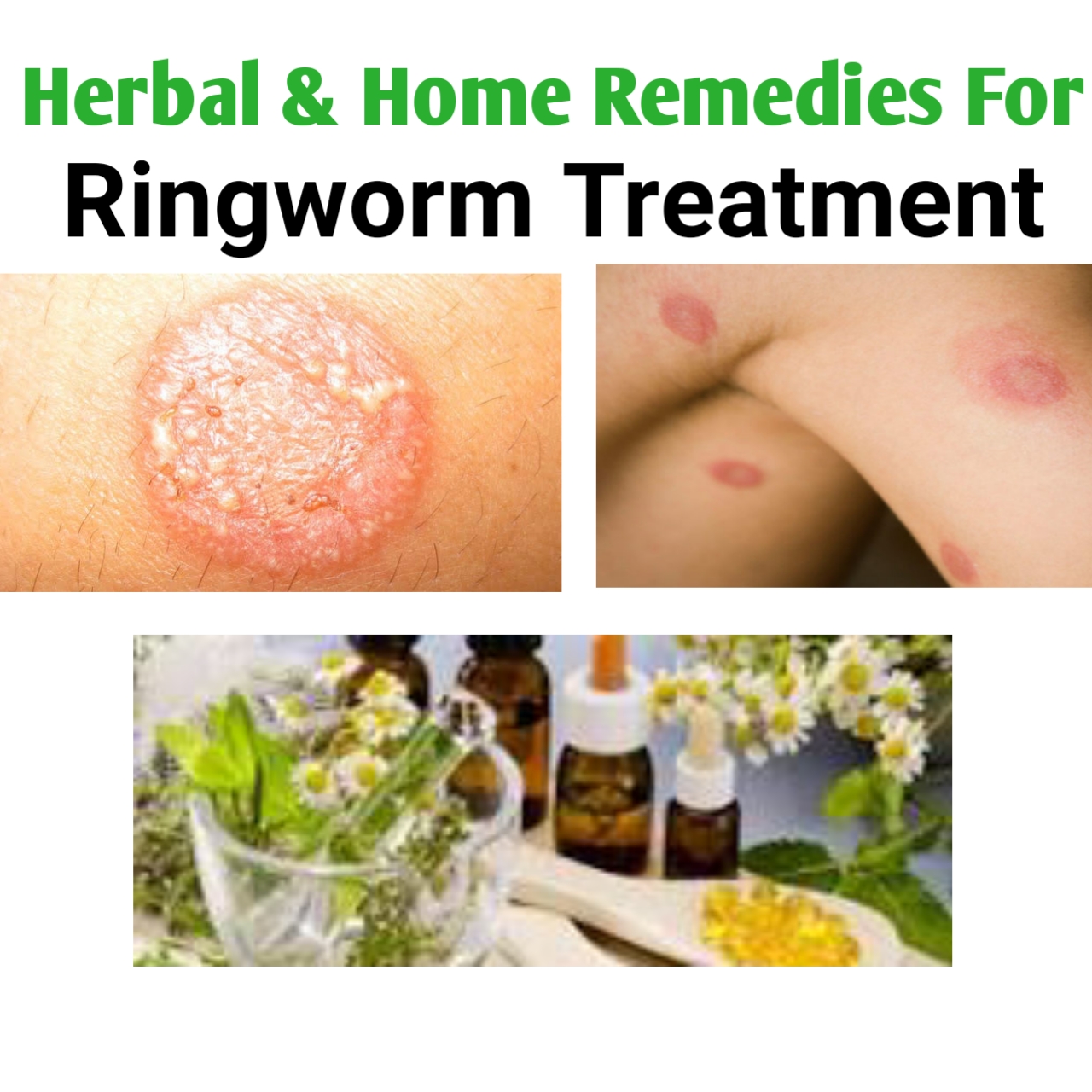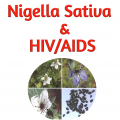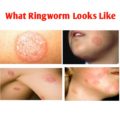Ringworm is a common skin infection that is caused by a fungus. It’s called “ringworm” because it can cause a circular rash (shaped like a ring) that is usually red and itchy. Anyone can get ringworm. The fungi that cause this infection can live on the skin, surfaces, and household items such as clothing, towels, and bedding. Ringworm goes by many names. The medical terms are “tinea” or “dermatophytosis.” Other names for ringworm are based on its location on the body – for example, ringworm on the feet is also called “athlete’s foot.”
Herbal medicines constitute the main component of traditional medicine, which have been used for thousands of years. They have made significant contributions to human health through their health promotive, curative, and rehabilitative properties and in the prevention of illnesses. Indeed, many herbal remedies used traditionally have become modern medicines through drug development. Digoxin, morphine, colchicine, and artemisinin are some notable examples. Long tradition of use of many herbal remedies and experiences passed on from generation to generation has brought about reliance by the people on herbal remedies. At present, the use of medicinal plants for health benefits is increasing worldwide.
What is a Home Remedy?
A Home remedy is defined as a simply prepared medication or tonic often of unproven effectiveness administered without prescription or professional supervision. Home remedies may or may not have medicinal properties that treat or cure the disease or ailment in question. Every civilization defines, views, and applies its home remedies differently. Historic cookbooks are frequently full of remedies for dyspepsia, fevers, and female complaints. Home remedies may or may not have medicinal properties that treat or cure the disease or ailment in question, as they are typically passed along by laypersons. A common error is to confuse home remedies with homeopathic remedies. In fact, the two concepts are unrelated.
Home remedies have become increasingly popular as the expense and hassle of conventional medicine continue to rise. Beyond the convenience, home remedies have found favor with a public that wants to take a more holistic approach to its ailments.
Today herbs are catching a lot of attention due to their very nature of cure: simple, no side effects, no chemicals, inexpensive, plus the ability to be able to cure yourself. This trend for resorting to home remedies is not new. In fact, they have their origin in ancient times. Traditionally, in India, and many parts of the globe plants with medicinal value, are grown in home gardens. These plants were used effectively as self-help remedies for managing primary health care.
Best Herbal Home remedies For Ringworm infection
Herbal remedies are useful in treating mild cases of ringworm infection. They also cause fewer or nil side effects as compared to commercial medications.
Oregano oil
Oregano oil is an essential oil made from the oregano plant that is purported to have healing properties. Research shows oregano oil has antimicrobial, antiviral, and antifungal properties. In addition compounds in oregano oil are also potent antioxidant, anti-inflammatory, antidiabetic, and cancer-suppressor agents.
How to Use Oregano Oil for Ringworm Treatment
Massage the infected area with 2 to 3 drops of oregano oil, 3 to 4 times a day, for about 7 days for curing ringworm of the body.
Lavender essential oil
Lavender is an herb native to northern Africa and the mountainous regions of the Mediterranean. Lavender is also grown for the production of its essential oil, which comes from the distillation of the flower spikes of certain lavender species. The oil has cosmetic uses, and it is believed to have some medicinal uses.
A study published in the Journal of Medical Microbiology found that lavender oil could be effective in combating antifungal-resistant infections.
The researchers found that the oil was lethal to a range of strains that can cause disease in the skin. In the study, the essential oils distilled from the Lavandula genus of the lavender plant seemed to work by destroying the membranes of fungal cells. The study showed that Lavandula oil is potent and demonstrates antifungal activity on a wide spectrum.
How to Use Lavender essential oil for Ringworm Treatment
Apply 3 to 4 drops of lavender essential oil (dilute with a carrier oil for sensitive skin) and let the skin absorb it fully for effective results.
Coconut oil
Coconut oil, or copra oil, is an edible oil extracted from the kernel or meat of mature coconuts harvested from the coconut palm. It has various applications. Coconut oil has long been used as a treatment for ringworm for several reasons. The first is that it has strong antifungal benefits that can eradicate mild or superficial fungal infections when applied topically. These benefits come from the lauric acid and antimicrobial lipids found in the medium-chain fatty acids in coconut oil.
Coconut oil’s antifungal benefits shouldn’t be ignored, as one study found Trusted Source that it was effective in treating drug-resistant Candida species, possibly even more so than other OTC remedies.
Coconut oil is also used to help wounds heal faster Trusted Source. Its anti-inflammatory, antioxidant, and moisturizing benefits can soothe skin irritation and flakiness by lubricating the skin and reducing healing time. This can also help to decrease redness and other visible symptoms of the infection.
How to Use Coconut oil for Ringworm Treatment
Coconut oil can be applied to the scalp after using an anti-fungal shampoo. It will alleviate scaling, itchiness, and dryness.
Garlic
Garlic is a herb that is grown around the world. It is related to onion, leeks, and chives. It is thought that garlic is native to Siberia, but spread to other parts of the world over 5000 years ago. Garlic is often used to treat an infection. Although there are no studies that examine the effects of garlic on ringworm, it has proven effective for other types of fungi, including Candida, Torulopsis, Trichophyton, and Cryptococcus.
How to Use Garlic for Ringworm Treatment
To use garlic as a treatment, make a paste of crushed garlic cloves by blending the garlic with some olive or coconut oil. Apply a thin layer of paste to the affected skin and cover with gauze. Leave in place for up to 2 hours before rinsing. Repeat twice daily until symptoms resolve.
If the garlic paste causes stinging, swelling, or redness, rinse off immediately and do not reapply.
Tea tree oil
Tea tree oil, also known as melaleuca oil, is an essential oil with a fresh camphoraceous odor and a colour that ranges from pale yellow to nearly colourless and clear. It is a highly effective essential oil that has multiple uses and benefits. This oil is extracted from the Melaleuca alternifolia and can be applied to the face and body to treat pimples and as an active ingredient for skincare products.
Although Tea tree oil has been used for over a century for skincare and treatment, it has only recently gained popularity worldwide. Since its beneficial properties have been documented, many cosmetic and skincare companies have started to add Tea tree oil to their products as the key active ingredient.
Tea tree oil products can now be found in almost every home, especially families with young children, the elderly, or those who suffer from sensitive skin.
How to Use Tea tree oil for Ringworm Treatment
Tea tree oil dries the skin and prevents the development of blisters or pus on the ringworm skin rash. Use a few drops of tree tea oil mixed in coconut or olive oil, or use ointments with tree tea oil as an ingredient.
Grapefruit seed extract (GSE)
Grapefruit seed extract (GSE) or citrus seed extract is a supplement made from the seeds and pulp of grapefruit. It’s rich in essential oils and antioxidants and has a variety of potential health benefits. Athlete’s foot is a skin disease that usually occurs between the toes and is caused by a fungus. As a natural treatment for athlete’s foot, you can try applying full-strength grapefruit seed extract to the problem areas two to three times per day. It shouldn’t take too long to have the itching, burning, and general unpleasantness of athlete’s foot under control.
How to Use Grapefruit seed extract for Ringworm Treatment
Nail ringworm infection can be treated by soaking the affected nail in a few drops of grapefruit seed extract (GSE). You may add a few drops of tea tree oil to GSE after soaking the nail for a few minutes.
Other topical herbal remedies include apple cider vinegar, mustard seed paste, green walnuts, honey and turmeric paste, fresh lime juice and grounded butea seeds paste, raw papaya, and juices of cassia leaves and holy basil.
Maintaining good personal hygiene, avoiding contact with infected animals, keeping the skin dry and cool, and not sharing personal items with others can help reduce the risk of developing ringworm.
How to Prevent Ringworm Infection
Ringworm is difficult to prevent. The fungus that causes it is common, and the condition is contagious even before symptoms appear. Take these steps to reduce your risk of ringworm:
- Educate yourself and others. Be aware of the risk of ringworm from infected people or pets. Tell your children about ringworm, what to watch for and how to avoid infection.
- Keep clean. Wash your hands often. Keep shared areas clean, especially in schools, child care centers, gyms, and locker rooms. If you participate in contact sports, shower right after practice or a match and keep your uniform and gear clean.
- Stay cool and dry. Don’t wear thick clothing for long periods of time in warm, humid weather. Avoid excessive sweating.
- Avoid infected animals. The infection often looks like a patch of skin where fur is missing. If you have pets or other animals, ask your veterinarian to check them for ringworm.
- Don’t share personal items. Don’t let others use your clothing, towels, hairbrushes, sports gear or other personal items. And don’t borrow such things.





